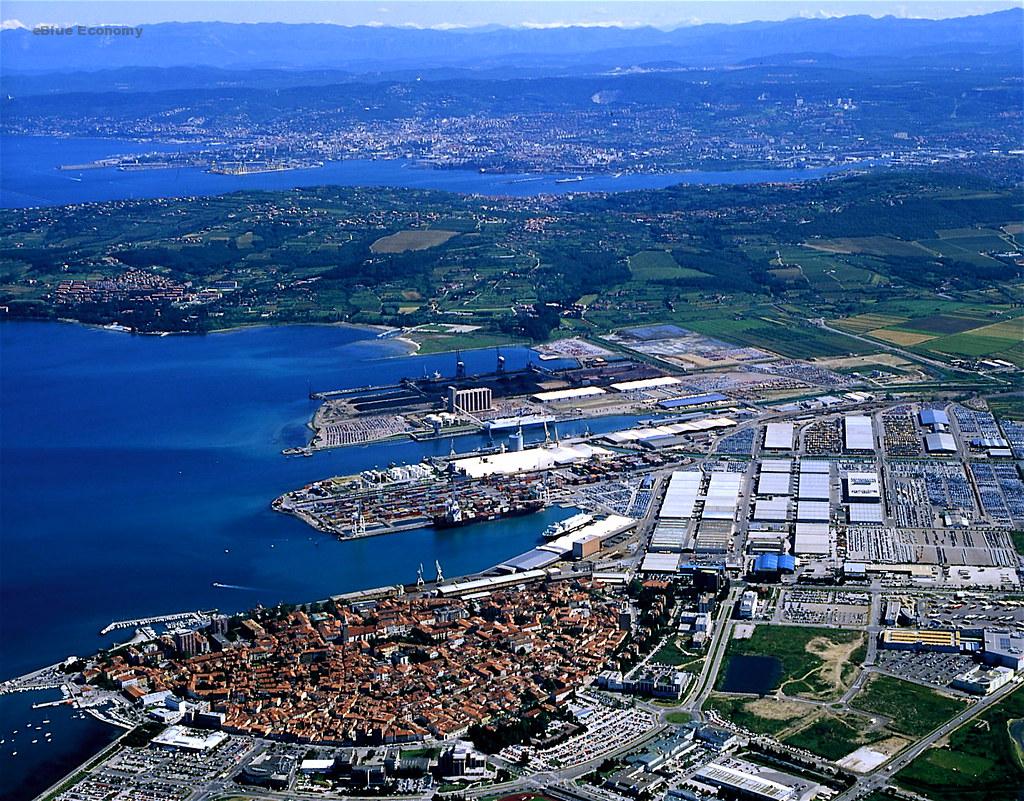In the given conditions, dictated by the circumstances of the pandemic Covid 19, the Luka Koper Group business performance in the first quarter of 2020 has been good. In light of the uncertain economic forecasts, the company has prepared several scenarios with the aim of ensuring sufficient liquidity and limiting the negative effects of the global crisis. “At the beginning of the outbreak of the coronavirus epidemic in China,
Luka Koper responded in a timely manner and instituted various optimizations, thus ensuring the meeting of the goals set in the business plan for 2020,” said Dimitrij Zadel, president of the Port of Koper management board, commenting on the business results achieved in the first quarter of this year.
Although net sales, which in the January through March period amounted to 55 million euros, were 6% lower than planned, operating profit (EBIT) amounted to 9 million euros or 9% more than planned. First quarter net profit in the amount of 7 million euros also exceeded the plan by 3%.
Due to the coronavirus pandemic which spread from Asia to other continents, all key markets of Luka Koper and practically all industries were affected, which is also evident from the port’s throughput statistics referring to the first three months of the year.
In this period, we handled 5.2 million tons of goods, which is 12% less than in the same period last year. A similar situation was faced by most other ports in the region and beyond, with a decline in throughput being recorded.
|
Luka Koper, d. d. |
Luka Koper Group |
|||||
| in EUR |
1 – 3 2020 |
1 – 3 2019 |
Index 2020/ 2019 |
1 – 3 2020 |
1 – 3 2019 |
Index 2020/ 2019 |
|
Net sales |
54,222,182 |
59,628,749 |
91 |
55,210,544 |
60,650,655 |
91 |
|
Earnings before interest and taxes (EBIT) |
8,323,118 |
16,672,762 |
50 |
8,550,031 |
17,147,053 |
50 |
|
Earnings before interest, taxes, depreciation |
15,078,504 |
23,779,397 |
63 |
15,507,807 |
24,427,222 |
63 |
|
Profit or loss from financing activity |
-53,280 |
-45,790 |
116 |
-18,415 |
-9,336 |
197 |
|
Net profit or loss |
6,885,530 |
13,534,051 |
51 |
7,475,863 |
14,387,259 |
52 |
|
Investments |
10,774,688 |
5,830,775 |
185 |
10,807,592 |
6,266,302 |
172 |
In the first three months of this year, the Group continued with the construction of key development investments, such as the new RO-RO berth, completion of new railway access and the construction of the garage at the car terminal. In addition, we selected the contractor for the construction of the extension of the container terminal.
The coronavirus pandemic will affect the operations of the Luka Koper Group in the coming months as well. It is difficult to predict to what extent, given the uncertainties associated with the virus itself and the impact that a widespread halt to economic activity will have on the global economy as a whole.
“At Luka Koper, we are closely monitoring all events, including those related to government interventions, and take measures to ensure access to a sufficient amount of liquid assets to overcome the effects of the pandemic. Nevertheless, the company will continue to implement key development projects, since the current crisis has also highlighted the benefits of the port’s multifunctionality,” added Zadel.
In Luka Koper, the decline in throughput registered in April due to the pandemic was felt the most in the cargo groups related to automobile production: raw materials for the steel industry, sheet metal for the production of vehicles, spare and component parts, and finished products. On the other hand, we recorded an increase in bulk cargo throughput, while the container segment is even slightly above the planned volumes.
The throughput statistics by cargo group fluctuate greatly from month to month, which is the result not only of uncertain economic conditions, but also of changed logistics flows and supply chains.
The situation in the Port of Koper’s hinterland and overseas markets is slowly stabilizing. Production facilities, especially in the automotive industry, are operating again, so we expect to be able to more easily predict throughput trends in the coming months.
Press – Release














